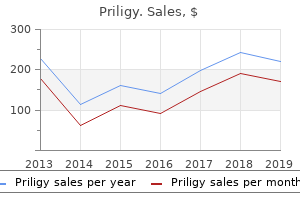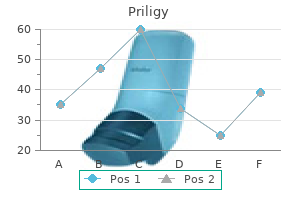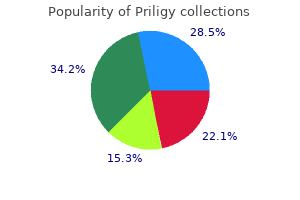"Discount priligy 30mg mastercard, erectile dysfunction inventory of treatment satisfaction questionnaire."
By: Joseph A. Smith, Jr., MD
- Professor of Urologic Surgery, Vanderbilt University, Nashville, Tennessee
Chronic complications of extremity trauma are frequent and include venous thrombosis impotence cure order priligy 90mg visa, infection erectile dysfunction from steroids buy generic priligy 60mg line, nonunion erectile dysfunction treatment bay area generic priligy 30mg mastercard, avascular necrosis erectile dysfunction at age of 20 generic priligy 90 mg otc, advanced regional pain syndrome, degenerative joint illness, and myositis ossificans. Avulsion fractures of the coracoid process, the conoid tubercle of the clavicle, or a coracoclavicular interval higher than thirteen mm suggests disruption of this ligament. The majority of glenohumeral dislocations are anterior and are categorised as subcoracoid, subglenoid, subclavicular, and intrathoracic. The subcoracoid place of the humerus is most common and is normally apparent each clinically and on radiology research. A subglenoid place results in luxatio erecta, persistent nonvoluntary abduction of the humerus. Injuries to the rotator cuff and the articular capsule are additionally associated with these dislocations. Recurrent dislocations are frequent in youthful patients and those with related gentle tissue and osseous damage. These accidents are difficult to diagnose each clinically and on commonplace radiographs. Axillary and transcapular radiographs or cross-sectional images are the most reliable methods within the identification of this damage. Reverse Hill-Sachs fractures, damage to the posterior labrum, and lesser tuberosity fractures are associated with posterior dislocations. Humerus, Elbow, and Forearm Fractures of the humeral neck most commonly occur in elderly patients with osteoporosis after minor trauma. The surgical neck is normally concerned however additional fractures of higher and lesser tuberosity are regularly found. Most humeral neck fractures are minimally displaced as the fragments are held in apposition by partially intact periosteum, joint capsule, and rotator cuff tendons. A fracture fragment distraction of higher than 1 cm or angulation of higher than 45� signifies high-grade accidents that may require surgical fixation. Fractures of the anatomic neck are much less frequent, however end in disruption of blood supply with high charges of avascular necrosis of the humeral head. Additional complications of trauma to this region include neurovascular damage and adhesive capsulitis. Fractures of the humeral shaft occur in high-influence accidents, typically in youthful patients. These fractures are often minimally displaced and identification of an elbow effusion or displacement of the supinator fats pad might help of their identification. Imaging of the wrist ought to be performed in instances of severe comminution of the radial head to rule out a coexisting distal radioulnar joint disruption, an Essex-Lopresti damage. Fractures of the olecranon are the second most common elbow fractures within the adult. Oblique fractures may be refined however prominence of the olecranon bursa and joint effusion are often current. The most common elbow fractures in youngsters are supracondylar, lateral condylar, and medial epicondylar in descending order of frequency. Supracondylar fractures may be associated with arterial damage and median nerve palsy. Additionally, suboptimal discount of supracondylar fractures might end in loss of normal valgus angulation at the elbow. Avulsion fractures of the medial epicondyle may be refined, especially when the fragment is trapped within the joint. Absence of the medial epicondyle is abnormal if the secondary middle of ossification of the trochlea is current. Transcondylar and intercondylar fractures normally occur as a result of falling on an outstretched hand, typically in osteoporotic patients. Displacement and rotation of fracture fragments are frequent and normally dictate surgical repair.

Clinicians due to this fact have an ethical imperative to erectile dysfunction cvs generic 90mg priligy with amex prevent most popular erectile dysfunction pills generic priligy 60mg online, display erectile dysfunction green tea priligy 30 mg without a prescription, assess erectile dysfunction treatment seattle order 30 mg priligy visa, deal with, and follow up N/V to ensure the best possible care for dying cancer sufferers. What are the principle pathways concerned within the pathophysiology of nausea and vomiting? Nausea is defined as a feeling of illness within the abdomen and is characterised by an urge to vomit. Vomiting is the forceful expulsion of the contents of the abdomen and proximal small gut. Nausea and vomiting (N/V) are widespread signs in dying sufferers and arise because of both therapy-related toxicity (illness-specific Guide to Pain Management in Low-Resource Settings, edited by Andreas Kopf and Nilesh B. This allows the zone to sense fluctuations within the focus of certain substances within the bloodstream. Vestibular pathways may be stimulated by vestibular illness corresponding to vertigo, middle-ear infections, or movement illness. Delayed emesis occurs after the primary 24 hours of the exposure to the emetogen and persists up to 4�6 days. In addition to serotonin, substance P, together with different neurotransmitters, appears to have an necessary function within the maintenance of acute and delayed N/V. Anticipatory N/V is defined as a conditioned "discovered" response, usually occurring when episodes of N/V have been inadequately controlled with prior exposures. It occurs earlier than, throughout, or after the exposure to the emetogen, however not at the time emetogenrelated N/V could be expected to happen. In this situation, quite a lot of stimuli corresponding to odor, sight, or sound provoke emesis. Nausea and vomiting are usually categorized as acute, delayed, refractory, anticipatory, or breakthrough. Acute emesis, which appears to be mediated by serotonin, occurs within three to 4 hours after exposure to an emetogen corresponding to chemotherapy (see Table 1). Serotonin is released from the enterochromaffin What is the differential analysis of nausea and vomiting? Differential analysis/etiologies of nausea and vomiting (tailored from Dalal et al. Hematologic Cancer with Nausea and Vomiting 171 What chemotherapy agents trigger the most issues with nausea and vomiting? Table 1 Risk for emesis within the absence of prophylactic antiemetic therapy with commonly used chemotherapy drugs [tailored from Perry (2001)] Drug (Dose) High Risk (>90%) Carmustine (>250 mg/m) Cisplatin Dacarbazine (>500 mg/m2) Dactinomycin Lomustine (>60 mg/m) Mechlorethamine Streptozocin 2 2 Moderate Risk (30�90%) Carboplatin Carmustine (<250 mg/m2) Low Risk (<30%) Asparaginase Bleomycin Cytarabine (<1 g/m2) Doxorubicin (<20 mg/m2) Etoposide (p. The evaluation ought to include the historical past and bodily examination of the patient. When taking the historical past, ask in regards to the characteristics of N/V: � Onset (to determine a particular set off) � Relationship to consuming (postprandial N/V may be attributable to an obstruction) � Medication evaluation (a medication change might help) � Bowel motion historical past (are there indications for dysfunctional intestines? The summary desk at the finish of this chapter additionally consists of helpful therapy algorithms, together with pharmacological remedy. As with all signs, clinicians must incessantly reassess the efficacy of therapy and anticipate exacerbating elements. Adequate therapy and prevention of recurrent or extended nausea and vomiting are important. Can you deal with nausea and vomiting with nonpharmacological options (complementary and different medication)? However, a number of acupuncture-level stimulation techniques have been examined for treating nausea, vomiting, or each. These techniques include strategies that involve needles, electrical stimulation, magnets, or acupressure. Evidence helps using Table 2 Common pharmacological agents used to deal with nausea and vomiting (tailored from Policzer and Sobel [three]) Class of Drug Prokinetic Agents Metoclopramide 5�15 mg earlier than meals and at bedtime; s. Use metoclopramide with care; might trigger dystonia, which is reversible with 1 mg/kg diphenhydramine.
Buy 30mg priligy otc. What Would Happen If You Never Brushed Your Teeth?.

Case report Tabitha Nadhari erectile dysfunction age 33 generic priligy 60mg on line, a sixty six-yr-old lady from Basra impotence lack of sleep buy cheap priligy 30 mg line, Iraq erectile dysfunction therapy treatment generic priligy 60mg fast delivery, has a historical past of breast cancer xyrem erectile dysfunction purchase 90 mg priligy free shipping. Seven years in the past, she had a mastectomy with auxiliary clearance, adopted by radiotherapy and chemotherapy. She was freed from ache up to a yr in the past, when she began to complain about low again ache, which was mild and misdiagnosed first as "practical. Nadhari took nonopioid analgesics as wanted, corresponding to paracetamol (acetaminophen) or diclofenac. Due to the social problems after the war, neither chemotherapy or radiotherapy was available within the health system. Foud, who began her first on the weak opioid tramadol in addition to the diclofenac. Case report discussion this affected person with breast cancer and auxiliary lymph node involvement complains of severe ache as a result of a number of bone metastasis. Since all ache exacerbations did occur along side bodily activity, such ache known as incident ache (as opposed to breakthrough ache, which would seem additionally spontaneously). Nadhari should take a 10-mg pill (a titration dose), wait roughly half-hour, and then begin to go to the kitchen. Of course, she ought to be warned that the extra morphine, particularly if she needs more than one titration dose, may produce sedation and nausea, or both. Foud should contemplate rising the background morphine dose accordingly, maybe to 40 mg morphine q. Gona Ali and Andreas Kopf ache specialists from North America, Australasia, and Western Europe reported more breakthrough ache than did ache specialists from South America, Asia, and Southern and Eastern Europe. Many patients with cancer-related ache are inadequately managed, and this downside pertains to therapy of both background ache and breakthrough ache. Unsatisfactory therapy of breakthrough ache pertains to inadequate assessment, inadequate use of available remedies, and, in many cases, inadequate remedies. Health care professionals have to concentrate on the completely different therapy options, and patients have to have access to all of these completely different therapy options. The transitory exacerbation of ache is described within the medical literature by a number of completely different terms, corresponding to breakthrough ache, transient ache, exacerbation of ache, episodic ache, transitory ache, or ache move. The characteristics of breakthrough cancer ache vary from person to person, including the onset, length, frequency of each episode and attainable causes. Breakthrough ache might be described as brief-term ache exacerbation which is experienced by a affected person who has relatively secure and adequately controlled baseline ache. Breakthrough ache ought to be assessed in an identical method to background ache, with a ache historical past and bodily examination. Breakthrough ache seems to be more common in patients with � Advanced disease; � Poor practical standing; � Pain originating from the vertebral column and to a lesser extent from different weight-bearing bones or joints; � Pain originating from the nerve plexuses and to a lesser extent from nerve roots. A widely used set of diagnostic criteria for breakthrough ache is by Russell Portenoy, from Memorial Sloan-Kettering Cancer Center, New York. The criteria are: � the presence of secure analgesia within the previous 48 hours � the presence of controlled background ache within the previous 24 hours. Breakthrough ache is common in cancer patients, and in addition in patients with different forms of ache. Breakthrough ache is a heterogeneous situation, and its management due to this fact might contain the use of a wide range of remedies, quite than the use of a single, standard therapy. The most applicable therapy(s) will be decided by a number of various factors, including the etiology of the ache. First, you should consider whether or not breakthrough ache may be lessened by nonpharmacological strategies, corresponding to repositioning or mattress relaxation, rubbing or therapeutic massage, software of heat or chilly, and distraction and rest methods. Also, never forget to examine the fullness of the bladder in cases of acute ache exacerbation within the decrease abdominal area, particularly in noncommunicating or sedated patients. Second, if pharmacological intervention is crucial, the drug class of alternative in nociceptive ache Practical questions on breakthrough ache I am afraid of respiratory despair. As long as the ache and the opioid dose are balanced, there will be solely tolerable sedation and no respiratory despair. Since the principle of breakthrough ache management is opioid titration, this stability between ache depth and opioid unwanted side effects can be found easily. However, in uncommon cases, ache depth might not change, but the affected person might turn out to be more and more sedated.

Similarly erectile dysfunction liver cirrhosis purchase 30mg priligy with visa, if an office endometrial biopsy has already been carried out erectile dysfunction aafp cheap 60mg priligy free shipping, hysteroscopy with D&C is required zyprexa impotence buy cheap priligy 60mg. Recommendations � Outpatient endometrial biopsy with the Pipelle catheter is reliable and accurate for the detection of illness generally of endometrial cancer (stage of evidence: A) erectile dysfunction what is it buy discount priligy 90 mg on-line. Metastatic evaluation Is a metastatic evaluation needed in ladies with newly diagnosed endometrial cancers? Because endometrial cancer is a surgically staged illness, one function of surgery is to assess the extent of illness. These circumstances embody when the affected person is a poor surgical candidate due to medical comorbidities or when signs recommend potential metastasis to uncommon websites, corresponding to bone or the central nervous system. Both modalities have a sensitivity starting from 27% to 66% and a specificity of seventy three% to 99% [22,23]. Other studies, nevertheless, have proven either no correlation or a excessive-false constructive fee, raising questions in regards to the usefulness of the check [29]. Approach to endometrial cancer: finest practices What role does a gynecologic oncologist play in the initial administration of endometrial cancer? Treatment with curative intent should embody all websites of local, regional, or systemic illness. Total hysterectomy involving removal of the tubes and ovaries has been the mainstay of remedy for uterine cancer. However, in 1988, with mounting evidence that extrauterine illness was related to poor outcomes and that patients with advanced illness required more than simply surgical intervention, corpus cancer was converted to a surgically staged illness. Although opinion as to the role of routine lymphadenectomy stays divided, relative consensus has been reached that the data gained by complete surgical staging, including lymphadenectomy, presents prognostic pathologic findings that can be used to individualize extra remedy. Additionally, intraoperative decisions in regards to the need for complete staging are hindered by the difficulty of making certain broad institutional reproducibility and reliable intraoperative evaluation. Therefore, we provide the following observations: � Gynecologic oncologists are the only physicians particularly trained to perceive all the nuances related to preoperative and intraoperative care of patients with endometrial cancer, and their coaching permits correct choice making on an individual basis once last pathology is available. Gynecologic oncologists are the only subspecialists particularly trained to carry out complete staging using minimally invasive approaches. Current literature means that administration of these ladies by a gynecologic oncologist leads to improved illness-specific survival. These knowledge recommend that a gynecologic oncologist must be concerned in the initial care of each girl looking for remedy for endometrial cancer. Such involvement enhances the preoperative and intraoperative choice course of, permits completion of any needed procedure (complete staging or debulking), facilitates the choice relating to the need for added remedy, and leads to a complete and value-efficient scientific approach. Although most girls diagnosed with endometrial cancer current with early-stage illness confined to the uterus, metastatic illness is recognized in a big percentage when complete staging is carried out [31]. Even with revisions of the staging system in 2009, total hysterectomy, bilateral salpingooophorectomy, and bilateral pelvic and para-aortic lymph node dissection continue to be recommended. Traditionally, surgical staging for endometrial cancer has been accomplished with open laparotomy. Throughout the 1990s, multiple studies demonstrated the feasibility of a laparoscopic approach [32, 33]. Subsequent randomized, managed trials have compared laparotomy with laparoscopy. Laparoscopy was related to fewer average-to-severe postoperative opposed events than laparotomy (14% vs 21%; P b 0. Although operative time was longer for laparoscopy, the incidence of hospitalization of greater than 2 days was significantly decrease compared to laparotomy (fifty two% vs 94%; P b 0. Laparoscopy patients reported larger scores on several high quality-of-life measures over the 6-week recovery interval compared to laparotomy patients [35]. What is the role of robotic assistance in laparoscopic surgical administration of early endometrial cancer? In addition to a protracted studying curve, laparoscopic surgical staging is commonly troublesome to full in overweight ladies. The platform offers several unique and useful options, including a three-dimensional picture of the surgical field, "wristed" devices with seven levels of freedom, tremor filtration, and the power to operate whereas seated. Several case collection describing the use of robotic-assisted laparoscopy for endometrial cancer surgical staging have been printed [38,39] Robotic-assisted laparoscopy has not been prospectively compared in a randomized trial to standard laparoscopy for the performance of endometrial cancer surgical staging. Regardless, the present literature means that robotic-assisted laparoscopy has advantages much like those established for conventional laparoscopy compared to laparotomy.
References:
- https://alatorax.org/index.php/es/descargar/adjunto/359-26w4iz-haemodynamic-definitions-and-updated-clinical-classification-of-pulmonary-hypertension.pdf
- https://www.ojp.gov/pdffiles1/nij/199408.pdf
- http://norman.hrc.utexas.edu/fasearch/pdf/01073.pdf
- https://health.ri.gov/forms/registration/MedicalMarijuanaNewApplication.pdf
- https://www.colorado.gov/pacific/sites/default/files/NAS%20Scoring%20System.pdf

